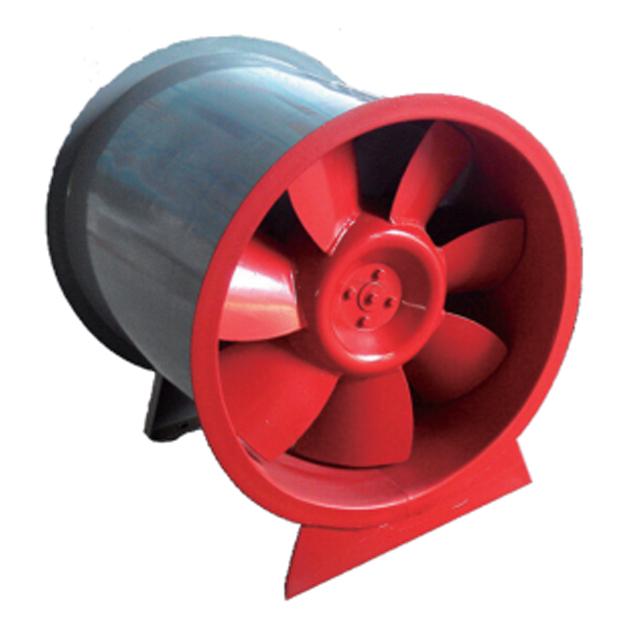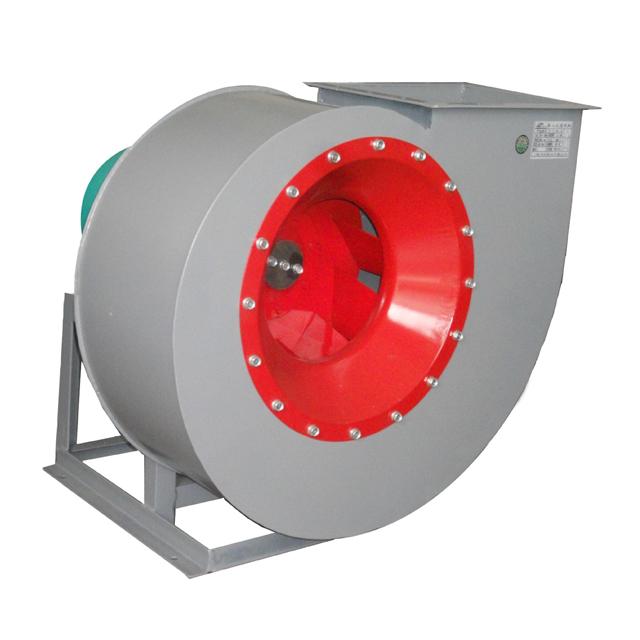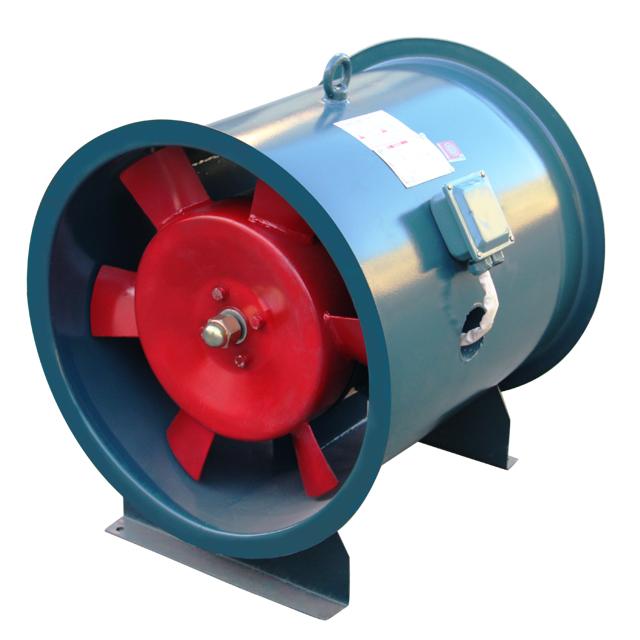The historical context and modern application of ventilation engineering
The historical context and modern application of ventilation engineering
1.1 The germination of ancient ventilation technology
In ancient times, the germination of ventilation technology can be traced back to the ancient civilization period. Although human beings at that time did not form a systematic ventilation engineering theory, they have skillfully used the principle of natural ventilation in real life. The pyramid design in ancient Egypt is an outstanding representative of the germination of ancient ventilation technology. The complex passageway and room layout inside the pyramid not only reflect the superb architectural skills of the ancient Egyptians, but also contain their deep understanding of ventilation. Through carefully designed vents, the interior of the pyramid is well ventilated, providing a good environment for the rest of the dead.
In ancient China, traditional dwellings such as siheyuan also showed the clever use of ventilation technology. The courtyard adopts the layout enclosed by four sides and open in the center, through the courtyard or courtyard as the core area of ventilation, using the natural wind pressure and thermal pressure effect to realize indoor and outdoor air exchange. According to historical records, the siheyuan in Beijing in the Ming and Qing Dynasties had excellent ventilation effect, which could introduce cool wind in summer and effectively block the cold wind in winter, reflecting the ancient living concept of "unity of man and man".
The germination of ancient ventilation technology is also reflected in the practice of agricultural production. For example, the granary design of ancient China fully considered the need for ventilation and moisture resistance. Granary is usually built on the ground, the bottom of the laid with slabs or boards, surrounded by ventilation holes, the roof is equipped with skylight or gas building, to use natural wind and temperature difference effect to promote the air circulation in the warehouse, to prevent grain mildew. This design not only extends the storage period of grain, but also reflects the ancient working people's deep understanding of ventilation technology and intelligent application.
1.2 The rise of modern ventilation engineering
The rise of modern ventilation engineering is the inevitable product of the industrial revolution and the acceleration of the urbanization process. With the end of the 19th century to the beginning of the 20th century, the scale of industrial production and the concentration of population in cities, the problems of indoor air quality and working environment have become increasingly prominent. In this context, ventilation engineering, as an independent discipline, gradually rises, which aims to improve the indoor environment and ensure people's health and production safety through scientific design and management.
Take Britain for example. During the Industrial Revolution, labor-intensive industries such as textile factories and coal mines developed rapidly, but the harsh working environment led to frequent health problems for workers. To improve this situation, engineers began to explore effective ventilation techniques.
In the 20th century, with the progress of science and technology and the improvement of people's requirements for the quality of life, ventilation engineering ushered in a period of rapid development.
With the popularization of computer technology and the application of advanced analytical models such as computational fluid dynamics (CFD), the design of ventilation engineering is more accurate and scientific. Designers were able to use these tools to simulate air flow in different environments, optimize the layout of ventilation systems, improve ventilation efficiency, and reduce energy consumption. According to statistics, modern and efficient ventilation systems can save up to 30% of their energy consumption compared with traditional systems, while significantly improving indoor air quality.
The rise of modern ventilation engineering is the result of the combination of scientific and technological progress and social demand. It not only improves people's production and living environment, but also promotes the development of related industries and technological innovation. With the continuous progress of science and technology and people's pursuit of a healthy life, ventilation engineering will play a more important role in the future.
1.3 Innovation and development of contemporary ventilation technology
In the innovation and development of contemporary ventilation technology, intelligence and green have become the two core driving forces. By integrating the Internet of Things and big data, the intelligent ventilation control system realizes the precise control and efficient management of the ventilation system.
The concept of green ventilation emphasizes the environmental protection and sustainability of the ventilation system. With the enhancement of global awareness of environmental protection, more and more ventilation projects have begun to adopt new environmentally friendly materials and equipment.According to the International Energy Agency, ventilation systems with energy efficient fans and heat recovery technology have significant effective in reducing carbon emissions, reducing energy consumption for buildings by about 20% per year on average. In addition, green ventilation also pays attention to the harmonious coexistence with the natural environment, such as the passive ventilation system designed by the principle of natural wind pressure and thermal pressure, while reducing energy consumption, it also brings fresh and natural air inside the building.
In terms of technological innovation, new technologies, new materials and new methods are constantly emerging in the field of ventilation engineering. For example, the application of new materials in the field of ventilation and filtration has greatly improved the efficiency of air filtration while reducing maintenance costs. In addition, the simulation analysis technology based on CFD (computational fluid dynamics) provides a scientific basis for the optimization design of the ventilation system. By simulating the air flow under different working conditions, the ventilation effect can be accurately predicted, so as to avoid design defects and resource waste. These technological innovations have not only promoted the rapid development of the ventilation engineering industry, but also created a more healthy and comfortable living environment for human beings.
2.1 Air flow and thermodynamic principle
As the core theoretical basis of ventilation engineering, the principle of air flow and thermodynamics profoundly affects the design and operation efficiency of ventilation system. In ventilation engineering, the air flow follows the Bernoulli equation, meaning that the pressure decreases accordingly when the flow rate increases, which has been widely used in wind tunnel experiments and the natural ventilation design of high-rise buildings.
The thermodynamic principle, especially the three basic heat transfer modes of heat conduction, convection and radiation, occupy a central position in the calculation of the thermal balance of the ventilation system. Taking the industrial plant as an example, cold air is introduced into the high-temperature operation area through the forced ventilation system, using the convective heat transfer principle to take away heat, and combining radiation shielding materials to reduce heat radiation loss to ensure the appropriate temperature in the working environment. According to the study, the production efficiency of factories with efficient ventilation and cooling technology can be improved by about 15%, and employee satisfaction can also be significantly improved.
The combination of air flow and thermodynamic principles also promotes the development of new ventilation technologies. For example, the intelligent temperature control ventilation system integrates temperature and humidity sensors, wind speed regulators and other equipment to monitor the indoor environmental parameters in real time, and automatically adjust the ventilation capacity according to the preset algorithm to achieve accurate temperature control. The application of this technology not only improves the intelligent level of the ventilation system, but also further reduces the energy consumption, which is in line with the development trend of green building.
2.2 Design principles and standards of the ventilation system
The design principles and standards of ventilation system, as the core cornerstone of ventilation engineering, are not only related to the operation efficiency and energy consumption level of the system, but also directly affect the indoor air quality and the health of residents. In the design process, the first principle is "ventilation according to demand", that is, according to the actual use demand of the building, personnel density and activity intensity of the building, the fresh air capacity demand is scientifically determined.
The design of the ventilation system should also strictly follow the relevant national and local standards and norms, and make clear provisions on the layout, pipe size, wind speed control and other aspects of the system. Taking wind speed control as an example, in order to avoid local vortex and dead corners caused by poor airflow organization, the design should ensure that the air supply wind speed is within a reasonable range to ensure uniform air distribution and improve the ventilation efficiency.
In terms of energy saving and consumption reduction, the design of ventilation system also needs to fully consider the energy efficiency ratio and operating cost. By using efficient and energy-saving ventilation equipment and materials, such as low resistance wind duct, frequency conversion fan, etc., combined with the intelligent control system to adjust the wind volume and wind speed, effectively reduce the energy consumption of the system. According to research, intelligent controlled ventilation systems can reduce energy consumption by about 20% -30% compared with traditional systems. At the same time, in the design process, the maintainability and scalability should also be paid attention to of the system, so as to reserve space for the future upgrading and transformation.
It is worth mentioning that, with the deepening of the green building concept, the design of the ventilation system also pays more and more attention to the integration and coordination with the whole building.
2.3 Ventilation efficiency and energy consumption optimization theory
Ventilation efficiency and energy consumption optimization theory is the core issue in the field of ventilation engineering, which is directly related to the improvement of building internal air quality and the reduction of energy consumption. In modern buildings, the efficient ventilation system can not only ensure the freshness and comfort of indoor air, but also significantly reduce the operating cost and achieve the goal of energy saving and emission reduction. According to the study, by optimizing the ventilation design, the building energy consumption can be reduced by about 15% to 30%, this data fully demonstrates the importance of ventilation efficiency and energy consumption optimization theory.
Taking a large commercial complex as an example, the building adopts the advanced ventilation efficiency optimization technology, and realizes the effective circulation and distribution of air by accurately calculating the air flow path and speed inside the building. At the same time, combined with the energy consumption simulation software, the operating parameters of the ventilation system are finely adjusted to ensure that the energy consumption is minimized on the premise of meeting the indoor air quality requirements. After the actual operation test, the energy consumption of the ventilation system of the commercial complex is about 25% lower than that of the traditional design, and the indoor air quality has been significantly improved, which has won the praise of the majority of merchants and consumers.
In the process of ventilation efficiency and energy consumption optimization, the application of the analysis model plays a crucial role. By constructing the mathematical model of building ventilation system, the air flow and energy consumption level under different working conditions can be simulated, providing scientific basis for design optimization. In addition, with the development of big data and artificial intelligence technology, the intelligent ventilation control system has been gradually applied in practical projects. These systems can monitor the indoor air quality and energy consumption data in real time, automatically adjust the ventilation strategy, and achieve the optimal balance between ventilation efficiency and energy consumption.
3.1 Design and optimization of ventilation system for residential buildings
In the design and optimization of residential building ventilation system, the basic role of air flow and thermodynamic principle. Modern residential design pays more and more attention to the comfort and health of the living environment. As the key link to adjust the indoor air quality, the ventilation system needs to comprehensively consider the factors such as indoor and outdoor temperature difference, humidity, wind speed and pollutant concentration.
Under the guidance of the design principles and standards of the ventilation system, we should pay attention to the integrity and flexibility of the system. Taking multi-storey residential buildings as an example, the ventilation system adopts a modular design, and each floor can independently adjust the ventilation capacity according to the actual needs, which not only ensures the overall ventilation efficiency, but also avoids unnecessary energy waste. At the same time, the system also integrates the intelligent control module, which can automatically adjust the ventilation mode according to the indoor and outdoor environmental parameters, thus realizing the intelligent management of the ventilation system.
In the exploration of ventilation efficiency and energy consumption optimization, a three-dimensional model can be constructed to simulate the flow of indoor air under different ventilation strategies, and the ventilation efficiency and energy consumption level can be evaluated. The combination of top exhaust and bottom air intake can significantly improve the circulation efficiency of indoor air while reducing energy consumption. This finding provides strong data support for the optimized design of residential ventilation systems.
In addition, the maintenance and management of the ventilation system in the actual operation of the problems. By introducing the remote monitoring and fault diagnosis system, the real-time monitoring and early warning of the operation state of the ventilation system can greatly improve the maintenance efficiency and reliability of the system.
3.2 Ventilation and dust removal technology in industrial plants
In the field of ventilation and dust removal technology in industrial plants, the innovation and application of technology are directly related to the optimization of production environment and the guarantee of workers' health. With the rapid development of industrialization, the requirements of ventilation and dust removal technology are increasing. Take a large iron and steel enterprise as an example, the enterprise adopts advanced cloth bag dust removal technology, combined with efficient ventilation system, to realize the effective capture and treatment of dust particles produced in the production process. According to statistics, the dust removal efficiency of the system is as high as 99.9%, which significantly reduces the dust concentration in the workshop, improves the working environment, and also reduces the pollution of dust emission to the environment.
In the design of ventilation system, the enterprise fully considers the structural characteristics of the plant, the production process and the source of dust generation, and adopts the combination of partition ventilation and centralized dust removal. Through the accurate calculation of air volume and air pressure, the air circulation in each operation area is smooth, and the accumulation and diffusion of dust are effectively avoided. In addition, the system is also equipped with an intelligent control system, which can automatically adjust the ventilation capacity according to the dust concentration in the workshop, to achieve the purpose of energy saving and consumption reduction.
It is worth mentioning that in the process of research and development and application of ventilation and dust removal technology, the company has actively learned from international advanced experience and established close cooperative relations with a number of well-known scientific research institutions. By introducing the advanced analytical model and simulation technology, the performance of the ventilation and dust removal system is comprehensively evaluated and optimized, thus further improving the operation efficiency and stability of the system.
3.3 Integration of the ventilation and air-conditioning system in the commercial complex
In the design and operation of the commercial complex, the integration of ventilation and air conditioning system is the key to ensure a comfortable indoor environment, excellent air quality and efficient energy utilization. Taking an internationally well-known commercial complex as an example, the project adopts advanced VAV (Variable Air Volume, variable air volume) system. Through intelligent control, the supply air volume is automatically adjusted according to indoor personnel density and environmental parameters, achieving a significant effect of reducing energy consumption by about 20%. The system not only improves the shopping experience of customers, but also wins the international certification of green buildings, becoming a benchmark in the industry.
In the integrated design of ventilation and air conditioning systems, the commercial complex takes into account the complexity of the building structure and the diversity of space utilization.Through the simulation analysis, the indoor airflow distribution and temperature field are accurately predicted, which effectively avoids the local overheating or overcooling phenomenon, and ensures the uniformity and comfort of the air circulation. In addition, the project also introduced advanced air purification technology, such as HEPA (High-Efficiency Particulate Air, high-efficiency air filter) and activated carbon adsorption device, effectively remove PM2.5, formaldehyde and other harmful substances in the air, to ensure that the indoor air quality meets the international health standards.
It is worth mentioning that the commercial complex has also realized a high degree of intelligence and automation in the operation and maintenance management of ventilation and air conditioning system. Through the Internet of Things technology, each terminal device is connected to the central control system, realizing remote monitoring, fault diagnosis and automatic adjustment. This intelligent operation and maintenance mode not only improves the management efficiency, but also reduces the labor cost, providing a strong guarantee for the long-term operation of the commercial complex.
4.1 Ventilation problems in a complex environment
When discussing the ventilation project, the ventilation problem in the complex environment is undoubtedly a key field to be solved urgently. Taking the underground space as an example, such as the subway system, its unique closure and high human flow density have put forward extremely high requirements for the ventilation system. According to research, the CO ₂ concentration in subway cars can rise rapidly to more than 5000ppm during peak hours, far exceeding the comfort standard (it is generally believed that the CO ₂ concentration should be kept below 1000ppm). In order to solve this problem, the modern subway system generally adopts the efficient fan and air duct design, combined with the intelligent control system, to realize the on-demand adjustment of the air volume and wind speed, to ensure the air circulation and quality.
The ventilation problem in the complex environment is also reflected in the high-rise buildings. With the acceleration of the urbanization process, super high-rise buildings have sprung up like bamboo shoots after a spring rain. The air pressure difference, wind pressure effect and heat island effect brought about by their vertical height pose a severe challenge to the ventilation system. To solve these problems, engineers have adopted a variety of innovative technologies, such as double-layer curtain wall systems, wind pressure balancing devices and intelligent temperature control systems. Among them, the double-layer curtain wall system forms natural convection through the air layer between the inner and outer two layers of glass curtain walls, which effectively reduces the building energy consumption and improves the indoor air quality. According to the experimental data, the indoor air quality of double-storey curtain wall can be improved by more than 20%, and the energy saving effect is significant.
In addition, the ventilation problem in complex environments also involves special places such as industrial plants and chemical plants. These places often exist toxic and harmful gases, dust and other pollutants, and the requirements for the ventilation system are more demanding. To this end, the engineers have developed a variety of efficient dust removal and purification equipment to optimize the ventilation system design. CFD technology can accurately simulate the flow of airflow in a complex space, helping engineers predict and solve potential ventilation problems.
4.2 Challenges of the maintenance and management of the ventilation system
The challenges of maintenance and management of ventilation system are increasingly prominent in modern building and environmental engineering. With the expansion of building scale and the increase of complexity, the maintenance and management of ventilation system has become an important link to ensure indoor air quality and improve the comfort of living and working environment. About 30 percent of substandard indoor air quality can be attributed to ventilation systems, according to improper maintenance, highlighting the urgency of maintenance management.
In the ventilation system maintenance and management, the preventive maintenance strategy is particularly important. Prevent potential failures by regular testing, cleaning, and replacement of key components. In the maintenance of ventilation system in several industrial plants, the service life of equipment is significantly extended and the production loss caused by shutdown maintenance is reduced.
4.3 Ventilation strategies to deal with air pollution
Ventilation engineering plays a crucial role in ventilation strategies to deal with air pollution. With the acceleration of urbanization process and the increase of industrial activities, the problem of air quality is becoming increasingly serious, which has become a major challenge affecting human health and ecological environment. Through scientific design and efficient operation, the ventilation engineering provides an effective means to improve the indoor air quality and reduce the concentration of pollutants.
Take Beijing as an example. As the capital of China and the international metropolis of China, its air quality has long attracted much attention. In recent years, the Beijing municipal government has increased the investment in ventilation projects, especially during the winter heating period, through the implementation of "coal to electricity", "coal to gas" and other clean energy transformation projects, and supporting the construction of efficient ventilation system, effectively reduce the emission of sulfur dioxide, nitrogen oxide and other pollutants produced by coal burning. According to statistics, since the implementation of these measures, the PM2.5 concentration in Beijing has decreased significantly, and the air quality has been significantly improved.
In terms of the technical innovation of ventilation engineering, the intelligent ventilation control system has become a new trend to deal with air pollution. The system can monitor the indoor air quality in real time, and automatically adjust the ventilation capacity according to the concentration of pollutants to ensure the fresh indoor air.
In addition, the concept of green ventilation and sustainable development strategy are also important directions to deal with air pollution. Green ventilation emphasizes reducing energy consumption and carbon emission in the ventilation process, while paying attention to the protection of ecological environment.









